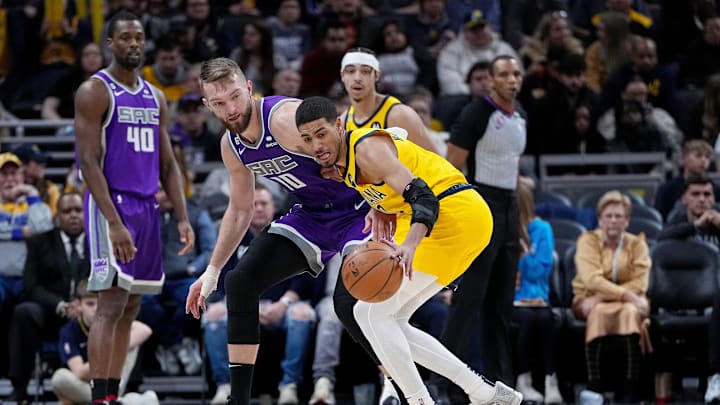2018-2020: Nate McMillan and Oladipo Era
Four years ago, the Indiana Pacers were a team without direction or purpose, always keeping their heads above water and remaining competitive, but not enough to make any serious noise. Of course, this did not seem to be the case following the 2017-18 season.
That season brought hope and a sense of security for the Pacers' future, with new star Victor Oladipo leading the charge into the post-Paul George era, even taking Indiana to seven games against the eventual Eastern Champion Cleveland Cavaliers, giving LeBron James and company a good run for their money along the way.
However, just 36 games into his 2018-19 campaign, Oladipo went down with a major leg injury against Toronto, ending his season and putting a clear ceiling on the Pacers' season as well. Without Oladipo, the Pacers avoided going completely underwater, holding a 16-19 record in the 35 games that followed which gave them a 48-34 record, good for fifth in the East, but it was clear this would not translate to the playoffs. Sure enough, the Pacers were swiftly handed four straight losses at the hands of the Boston Celtics in the first round, putting an end to their tumultuous season.
2019-20 represented some new hope for the Pacers. With Oladipo having a full summer to recover, and new additions TJ Warren, Malcolm Brogdon, and TJ McConnell adding some much-needed firepower to spell his absence, Indiana seemed poised to build upon their previous two seasons, hold steady with Oladipo gone, and then take control for a huge run with him returning.
Part of this ended up happening. Thanks to a breakout season from Domantas Sabonis, where he notched his first All-Star berth, and big debut years for Brogdon and Warren, who led the team in scoring with almost 20 per game, Indiana held a 30-17 record without Oladipo, good for fifth in the East once again.
However, after a resounding clutch performance in Chicago to win his first game back, Oladipo's Pacers lost the next six games in a row with him back, sparking concerns that maybe Indiana was better with him gone. Indiana eventually turned it around and went 8-3 the rest of the way before the NBA stopped operations altogether due to the COVID-19 pandemic.
Unfortunately for Indiana, another obstacle would get in their way following the start of the NBA Orlando Bubble in August, as Sabonis, in the middle of a potential Most Improved Player campaign, had to leave the bubble due to foot injuries, leaving Indiana with a depleted roster yet again and potentially another thrown season.
TJ Warren's spectacular play in the bubble was good enough to carry Indiana to a 6-2 record in the seeding games, but it didn't do them much good in the playoffs. In the first round, Indiana yet again got swept, this time by the Miami Heat and Jimmy Butler, whom Warren had some quarrels with earlier in the season.
Warren struggled at times but put up an admirable fight on one leg, and Oladipo was not the same player amidst injury struggles and rampant trade rumors, most of them directed to the Miami Heat themselves. This series was something of a wake-up call for Indiana's front office, who followed the series up by firing head coach Nate McMillan after four seasons and three playoff sweeps. Unfortunately, Indiana's McMillan replacement turned out to be even worse.
